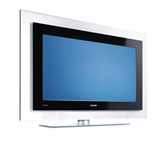Electronics industry in Green challenge
Environmentally sub-standard components from many Asian suppliers are proving to be a new challenge for global electronics companies.

Environmentally sub-standard components from many Asian suppliers are proving to be a new challenge for global electronics companies.
Responding to concerns over the environmental effects of materials used in consumer electronics products, Philips creative director Oscar Peña has admitted that quality control of other manufacturers is an industry-wide problem.
As creative director of Philips Design, the design arm of the Dutch electronics giant, Peña says that maintaining control over third party-manufactured parts can present difficulties for the group.
‘It is an industry-wide challenge to [ensure] quality control of bought-in parts. But I am confident that we are responsible in this area,’ he says.
His global team of 11 design studios is responsible for all the product design and packaging of Philips consumer products. Peña has just launched his latest design, the Ambilight Full Surround flat-panel television (pictured).
‘I think we are very proactive on issues of sustainability and recycling. We already provide a service for recycling components for other companies,’ Peña adds.
The main issue driving electrical and electronics companies to consider sustainable product design is compliance with two new items of EC legislation: Directive on Waste Electrical and Electronic Equipment and Directive on the Restriction of Use of Certain Hazardous Substances in electrical and electronic equipment, according to business advice organisation Envirowise.
In a presentation of Philips’ home entertainment and domestic appliance products, Peña also previewed concept technologies that will be formally unveiled at the company’s Simplicity travelling roadshow, to be held at London’s Excel in October. Forecasting three-to-five years ahead, concepts in development include movement-controlled lighting and a light-shade that can match the colour of any object held up to its sensor.
Philips’s design studios employ about 450 designers around the world, with 250 at the headquarters in Eindhoven, The Netherlands, where Peña is based.
Although rivals Samsung and Yahama have set up design studios in London, at the moment there are no plans to develop a Philips design team in the capital, according to Peña.
-
Post a comment



